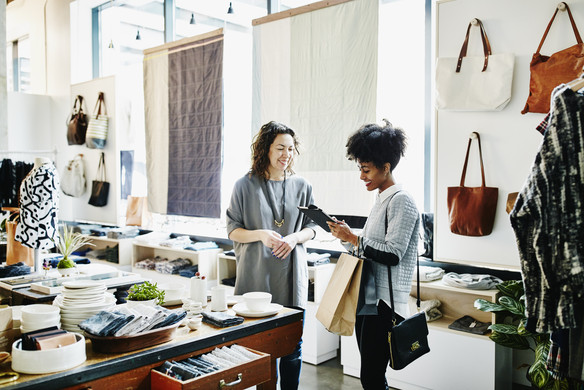Table of contents
ECommerce is a powerful driver of sales, demonstrating its staying power as in-person shopping was limited during the pandemic. But the desire for in-person shopping has returned in full force, with both businesses and consumers looking to in-person retail opportunities to expand and complement their digital commerce experiences.
The Square Future of Commerce report found that consumers’ online monthly retail purchases were down slightly in 2022 compared to 2021, and Afterpay found that consumers are ready to shop in-store more often in the coming year — particularly younger shoppers, who want to see physical items before they buy and to avoid waiting for items to arrive.
As consumers put more emphasis on in-person shopping, 94% of retailers said they’re leveraging services, offers, and new technologies to enhance the in-store experience. According to Square Future of Commerce data, here’s where retailers are focusing their attention.
1. Loyalty perks
The highest number of retailers said that they plan to offer loyalty perks to in-store shoppers only. Loyalty programs are an effective way to grow business revenue and encourage repeat customers, and Square found that customers who use a Square Loyalty rewards program spend an average of 43% more than customers who don’t.
Offering loyalty perks exclusively to in-store shoppers creates new incentives to visit a physical retail location, especially if the loyalty program offers perks that shoppers already want, such as sales and discounts or free, fast shipping and returns for online products.
2. QR codes
QR code use soared during the pandemic, but business and consumer use of QR codes continues to grow. Square Future of Commerce data found that 49% of retailers offered QR codes in 2022, compared to 36% in 2021. Consumers, in turn, are increasingly interested in exploring digital shopping methods, with 20% specifically citing the desire to use QR codes for window shopping purchases.
Retailers plan to use QR codes for a variety of in-store experiences, such as providing additional product information, offering promotions, and expanding digital experiences. Whether they offer payment links with a scannable QR code or drive in-person shoppers to their eCommerce stores or social profiles, QR codes are one of the most versatile interactive tools to enhance the in-person retail experience.
3. In-store events and experiences
Businesses are redefining verticals and diversifying their revenue streams by offering events, products, and mixed-use experiences not traditionally associated with in-store shopping. Square found that 21% of businesses’ revenue came from outside of their core offerings in 2022, up from 16% in 2021.
To attract customers and modernize shopping experiences, 36% of retailers said they plan to offer in-store events, like DIYs, classes, and holiday-specific events. Another 32% will highlight certain products with pop-ups and in-store discovery areas, or leverage mixed-use experiences to expand into new areas completely, such as in-store coffee or wine bars.
4. Virtual shopping
Visual commerce has helped bridge the divide between physical commerce and digital commerce, offering customers the ability to mirror some parts of the in-person shopping experience as they shop online. But visual commerce and virtual shopping aren’t for eCommerce alone — retailers are harnessing virtual experiences in-store to elevate products and the shopping experience overall.
Thirty-three percent of retailers plan to offer virtual experiences in-store, such as augmented reality (AR), virtual reality (VR), and interactive kiosks. Whether that means AR-enabled mirrors in dressing rooms or taking consumers on a VR tour of a supply chain, retailers are adopting this newer technology in-store to take the physical shopping experience to the next level.
5. Mobile checkout
Mobile checkout can help create a more seamless in-store purchasing experience. It can even help retailers connect with a younger consumer base that is tech savvy and expects businesses to be too. Thirty-two percent of retailers said they plan to use mobile checkout terminal devices to help support in-store transactions, whether that’s a mobile POS, tap to pay, or a POS terminal that accepts mobile payments.
6. Buy now, pay later
Buy-now, pay-later services have quickly gained traction, especially among high-intent millennial and Gen Z shoppers. Services like Afterpay offer consumers a new and convenient way to pay in-store from their mobile devices, and Afterpay reported that consumer spending on the platform was up 660% from January 2020 to February 2022.
Twenty-six percent of retailers said that they will offer buy-now, pay-later options in-store to expand their checkout options and to cater to a younger consumer demographic. Afterpay found that its users shop 50% more frequently than traditional customers, so offering buy now, pay later in-store lends retailers the potential to capture some of that revenue.
![]()











